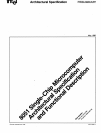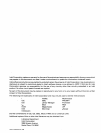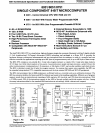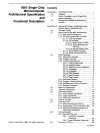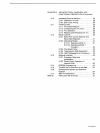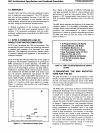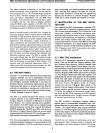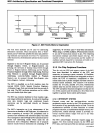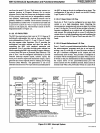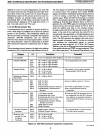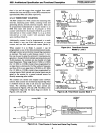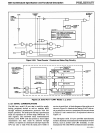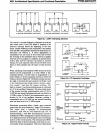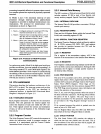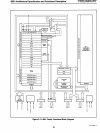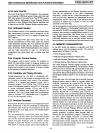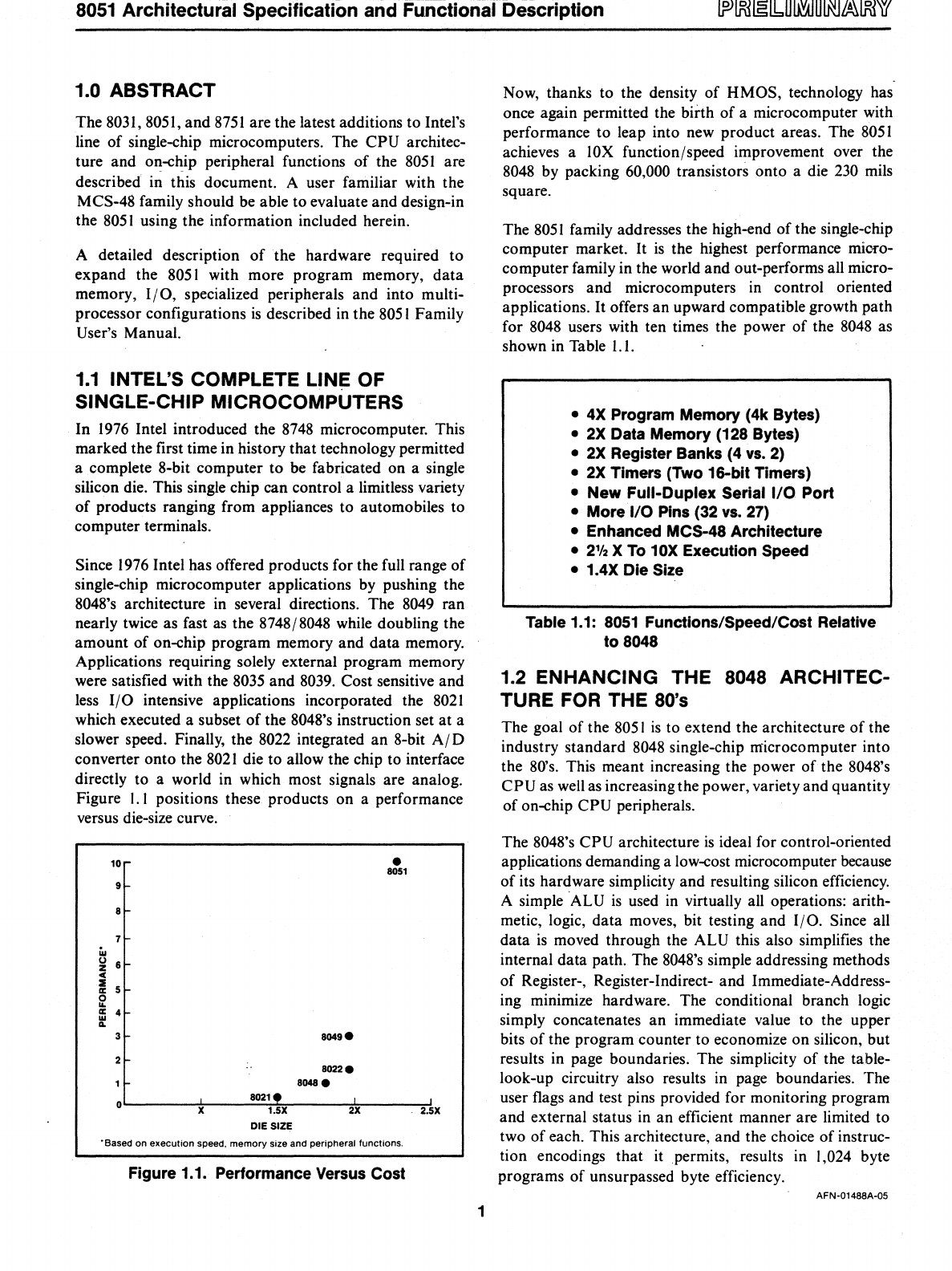
8051
Architectural Specification and Functional Description
1.0 ABSTRACT
The 8031, 8051,
and
8751
are the latest additions to Inters
line
of
single-chip microcomputers. The CPU architec-
ture and on-chip peripheral functions
of
the
8051
are
described in this document. A user familiar with the
MCS-48 family should be able to evaluate and design-in
the
8051
using the information included herein.
A detailed description
of
the
hardware required to
expand the
8051
with more program memory,
data
memory,
I/O,
specialized peripherals and into multi-
processor configurations
is
described in the
8051
Family
User's Manual.
1.1
INTEL'S COMPLETE LINE OF
SINGLE-CHIP MICROCOMPUTERS
In
1976
Intel introduced the 8748 microcomputer. This
marked the first time in history that technology permitted
a complete 8-bit computer
to
be fabricated on a single
silicon die. This single chip can control a limitless variety
of
products ranging from appliances to automobiles to
computer terminals.
Since
1976
Intel has offered products for the full range
of
single-chip microcomputer applications by pushing the
8048's architecture in several directions. The 8049 ran
nearly twice as fast
as
the 8748/8048 while doubling the
amount
of
on-chip program memory and
data
memory.
Applications requiring solely external program memory
were satisfied with the
8035 and 8039. Cost sensitive and
less
I/O
intensive applications incorporated the
8021
which executed a subset
of
the 8048's instruction set
at
a
slower speed. Finally, the
8022 integrated an 8-bit
A/D
converter onto the
8021
die to allow the chip to interface
directly to a world in which most signals are analog.
Figure
I.
I positions these products on a performance
versus die-size curve.
10
9
8
7
iu
il 6
c
~
5
o
...
ffi
4
...
3
2
8022.
8048
•
•
8051
8021.
0~------*X----~~1~.5~X------~2~X------.~2.5X
DIE SIZE
-Based on execution speed, memory size and peripheral functions.
Figure 1.1. Performance Versus Cost
1
Now, thanks to the density
of
HMOS, technology has
once again permitted the
birth
of
a microcomputer with
performance
to
leap into new product areas. The
8051
achieves a
lOX
function/speed improvement over the
8048
by packing 60,000 transistors onto a die 230 mils
square.
The
8051
family addresses the high-end
of
the single-chip
computer market.
It
is
the highest performance micfo-
computer family in the world
and
out-performs all micro-
processors and microcomputers in control oriented
applications.
It
offers an upward compatible growth path
for
8048 users with ten times the power
of
the
8048
as
shown in Table
1.1.
•
4X
Program Memory (4k Bytes)
•
2X
Data Memory (128 Bytes)
•
2X
Register Banks (4
vs.
2)
•
2X
Timers (Two 16-bit Timers)
• New Full-Duplex Serial
I/O
Port
• More
I/O
Pins (32
vs.
27)
• Enhanced MCS-48 Architecture
•
21/2
X
To
10X
Execution Speed
•
1.4X Die Size
Table
1.1:
8051
Functions/Speed/Cost Relative
to
8048
1.2 ENHANCING THE 8048 ARCHITEC-
TURE FOR THE 80's
The goal
of
the
8051
is
to extend the architecture
of
the
industry standard
8048 single-chip microcomputer into
the
80's. This meant increasing the power
of
the 8048's
CPU
as well as increasing the power, variety and quantity
of
on-chip CPU peripherals.
The
8048's CPU architecture
is
ideal for control-oriented
applications demanding a low-cost microcomputer because
of
its hardware simplicity and resulting silicon efficiency.
A
simpleALU
is
used in virtually all operations: arith-
metic, logic,
data
moves, bit testing and I/O. Since all
data
is
moved through the ALU this also simplifies the
internal data path. The
8048's simple addressing methods
of
Register-, Register-Indirect- and Immediate-Address-
ing minimize hardware. The conditional branch logic
simply concatenates
an
immediate value to the upper
bits
of
the program counter to economize on silicon, but
results in page boundaries. The simplicity
of
the table-
look-up circuitry also results in page boundaries. The
user flags and test pins provided for monitoring program
and external status in an efficient manner are limited to
two of each. This architecture, and the choice
of
instruc-
tion encodings that it permits, results
In
1,024 byte
programs
of
unsurpassed byte efficiency.
AFN-01488A-05



